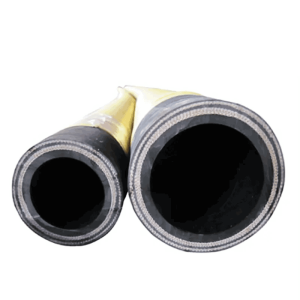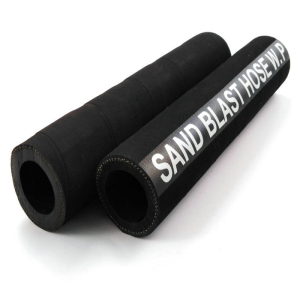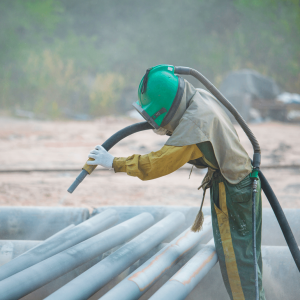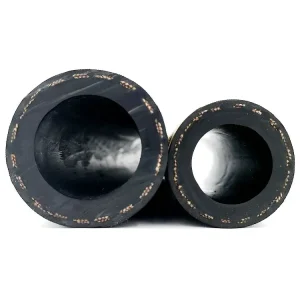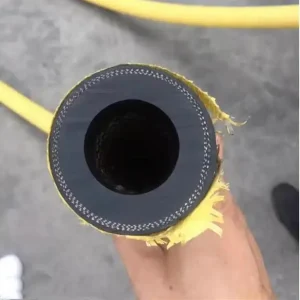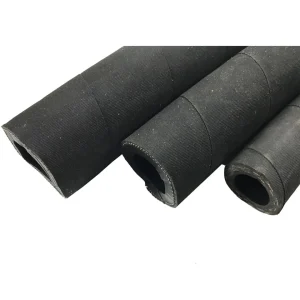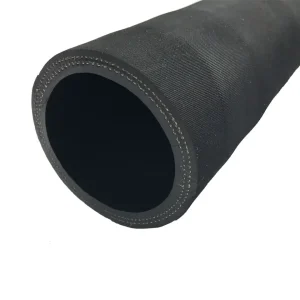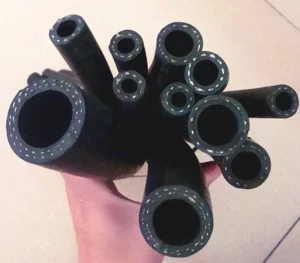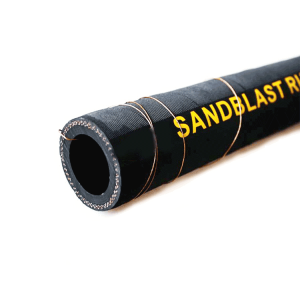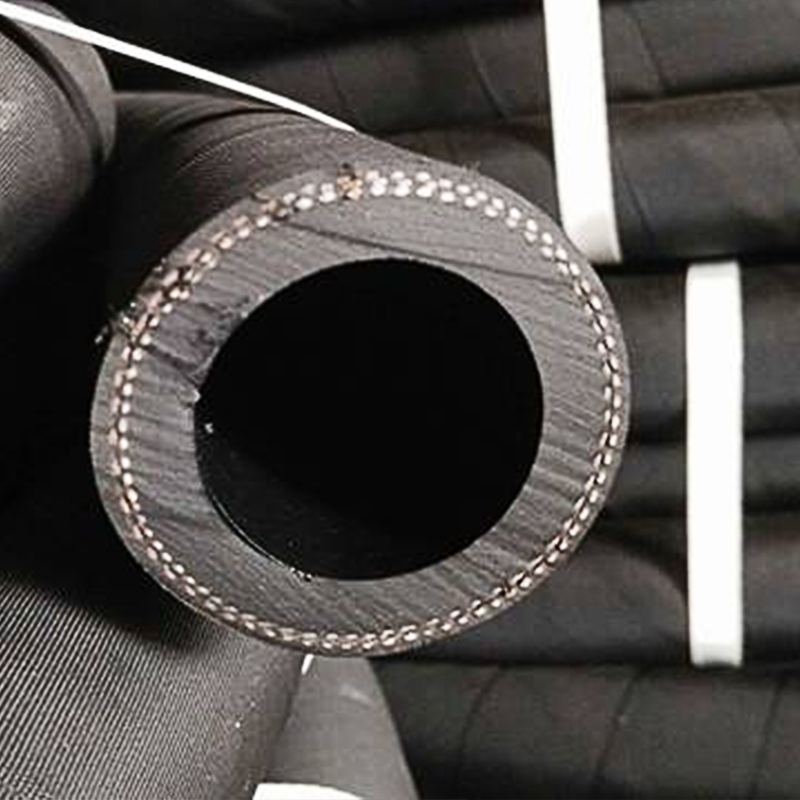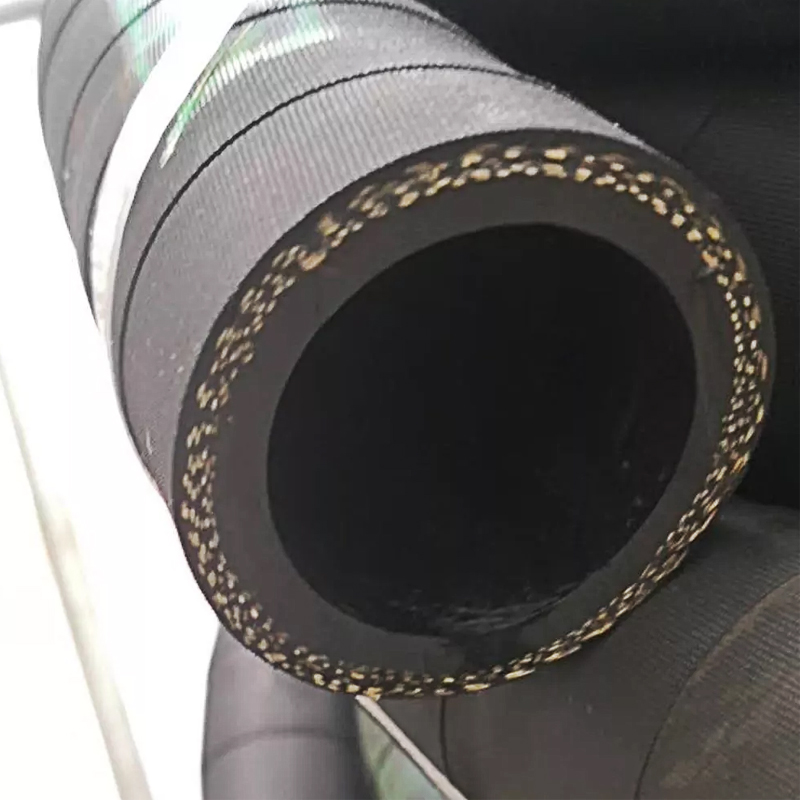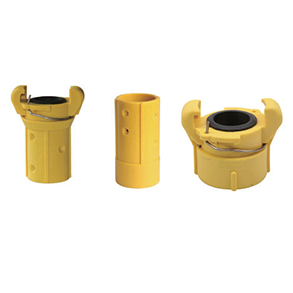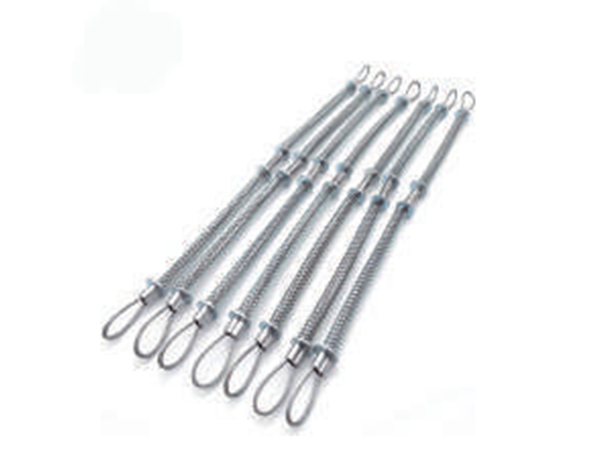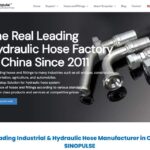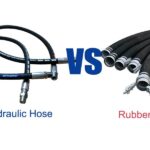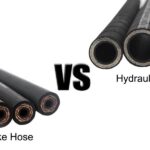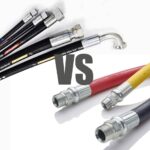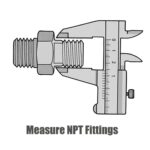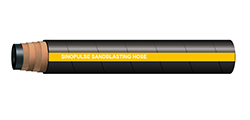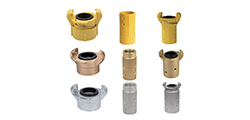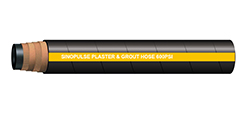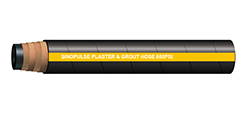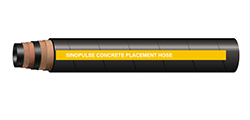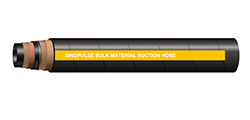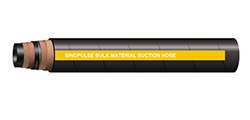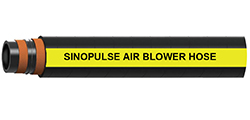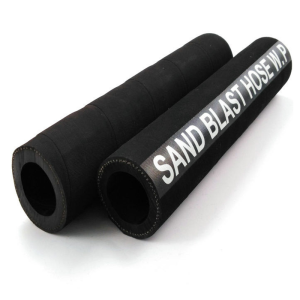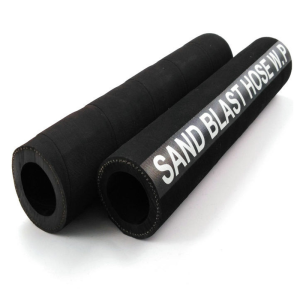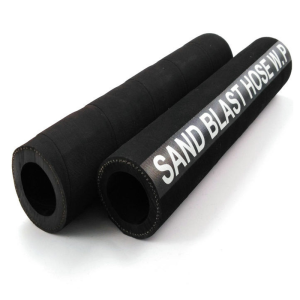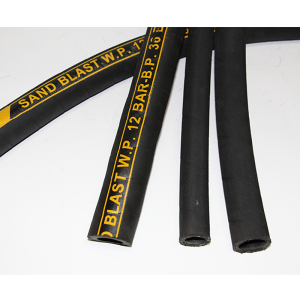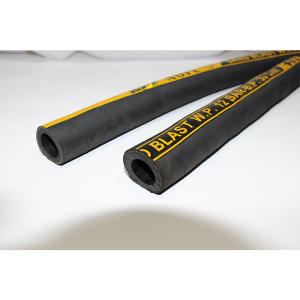SandBlasting Hose / Blast Hose
A sandblasting hose, also known as a sandblaster hose, blast hose, sand blasting hose pipe or blasting hose, is a specialized hose designed to deliver abrasive materials, such as sand, grit, or shot, during the sandblasting process. These hoses are specifically constructed to handle the materials' high pressures and abrasive nature.
The strength and durability of these sandblast hoses have been thoroughly tested and proven. Designed for industrial environments, they are compatible with common blasting media and are ideal for tough applications such as landfills, shipyards, and contractor sites. These hoses are built to withstand the harsh conditions of sandblasting and transportation, offering long-lasting performance and resistance to wear.
However, each hose is tailored to meet the specific needs and standards of both the operator and the machine. When selecting a hose, flexibility, durability, and the correct hose size must be considered.
Whether you’re looking for the high durability of the 4-ply hose, or the versatile 2-braid hose, Sinopulse offers the best quality blast hoses for all your blasting needs. And our blast hoses come in several different lengths and several different diameters, so it can accommodate whatever task you have in mind.
We also offer matching hoses with fittings and nozzle holders, making it easier for you to quickly set up and start your projects. Browse our selection to find the ideal sandblast hose for your needs. For any assistance, feel free to contact our expert team.
Diameter sizes available: 1/2″ ID t 6″ ID
2/4 Ply SandBlasting Hose Construction
The sandblasting hose is a heavy-duty hose specifically designed for abrasive blasting applications. It is typically constructed from multiple layers of rubber and reinforced with high-tensile strength fabric or wire. The inner layer of the hose is designed to resist abrasion and wear, while the outer layer protects the inner layer from the environment. The hose is also designed to be flexible and resistant to kinking. Sandblasting hoses are available in a variety of sizes and lengths to choose.
Tube:Black,smooth, NR synthetic rubber
Reinforcement: 2 ply or 4 ply High strength synthetic fabric
Cover:Black, smooth(wrapped), abrasion resistant NR synthetic rubber
Sandblast hoses are an integral part of the sandblasting process. These components transfer abrasive from the machine to the control handle, and their reinforced construction provides a vacuum-sealed environment for sandblasting.
Sinopulse sandblasting hoses are made of rugged materials to ensure maximum durability.
2/4 Ply Sand Blasting Hose advantage
1. Sandblasting hose has a very robust and abrasion-resistant outer cover.
2. The inner tube is made of natural rubber, which has good elasticity and flexibility.
3. The reinforcement layer is made of high-strength polyester thread, which has good tensile strength and wears resistance.
4. The sandblasting hose has good air tightness and can be used for a long time.
5. Highly abrasion resistant tube that will handle any blast grit
6. Cover is abrasion and weather resistant
7. Highly abrasion resistant tube handles manufactured coal slag, aluminum oxide or grit
Sand Blasting Hose is used for conveying sand or other abrasive materials engineered for sand/shot blasting purposes in ordnance factories, steel furniture manufacturing workshops, heavy engineering industries, etc.
SandBlasting HoseDetails
Application: Delivering quartz and metal sand, polishing, riding rust on metal surfaces, and spraying cement. It is manufactured with anti-static rubber granting a complete discharge of static electricity.
Temperature Available: -20℃ to 100℃
Character:anti-static electricity with copper wire reinforcement.
Sand Blasting Hose Specification
All sandblasting hoses are designed for industrial environments and can be used with all common blasting media, but each hose is designed to meet the specific needs and standards of the blasting operator and the machine itself. Flexibility and durability must be considered when selecting a hose, as well as the proper hose size.
Sinopulse is a leading sandblasting hose manufacturer, producing both 2-ply and 4-ply sandblasting hoses for the most atmospheric pressures. Our sandblasting hoses are available for a variety of applications. Our sandblasting hose is available in many different lengths and many different diameters, so it can be used for any task you want.
Sandblasting hoses are an integral part of the sandblasting process. These components transfer the abrasive from the machine to the control handle - their rugged construction provides a vacuum-tight environment for sandblasting.
All blast hoses are manufactured for industrial environments and can be used with all common blasting media, but each hose is designed to meet the specific needs and criteria of the sandblasting operator and the machine itself. When selecting a hose, flexibility and durability must be considered, as well as the appropriate hose size.
With proven strength and durability, these blast hoses are ideal for a variety of industrial applications such as rail yards, shipyards and contractor sites; these components are durable and resistant to the wear and tear caused by sandblasting and transportation.
Hot Products
Sandblasting Hose Size
Having the proper sandblasting hose size is critical as it will be one of the factors that will affect your blasting speed, you can learn about other factors that are important to increasing your blasting speed here. In particular, the hose you provide your sandblasting tank with is critical to being able to sandblast well. If you use sandblast hoses that are too small for your sandblasting nozzles, your hose will not be able to supply an adequate volume of media and air to the sandblasting nozzle. This will result in an inconsistent blast pattern. Additionally, if you feed your blasting nozzle with a sandblast hose that is too small, you may produce a smaller blast pattern, which can cause the sandblasting hose to wear faster, because the smaller the blast hose, the faster the media will move through it, which will accelerate wear.
Commonly used sizes are as follows
4 Ply Blast Hose 1-1/2″ ID X 2-3/8″ OD
4 Ply Blast Hose 1-1/4″ ID X 2-5/32″ OD
4 Ply Blast Hose 1″ ID X 1-7/8″ OD
4 Ply Blast Hose – 3/4″ ID X 1-1/2″ OD
4 Ply Blast Hose – 1/2″ ID X 1-3/16″ OD
Why Sandblast Hose important
Something as basic as a sandblasting hose can be important, and in sandblasting, it is a key component of the sandblasting system. The sandblasting hose you use is crucial because the sand blaster hose can deliver the blasting media to your blasting nozzle, and if anything goes wrong, it can cause serious safety and performance issues.
Should I choose a 2-ply or 4-ply sand blaster hose
Blast hoses come in a variety of thicknesses, including 2-ply, 4-ply, or Clemco Supra Blast hoses. The layers of a sand blaster hose refer to which layers the hose is made up of. Generally speaking, the more layers a hose has, the stronger the hose will be. Higher-ply hoses will have a higher initial cost, but they won't wear out as quickly. The key thing to consider when it comes to sand blaster hose layers is the environment you'll be sandblasting in. The more likely your blast hose will be worn out, run over by trucks, or receive rough treatment, the higher-ply hose you need to consider. Additionally, the longer the length of sandblast hoses you use, the more you need to consider using a larger sandblast hose, as the hose will likely be worn throughout the job site and therefore more likely to come in contact with various job site materials that could wear out the hose. As a general recommendation, 4-ply sandblast hoses are a popular choice for shipyards and industrial environments that may experience light vehicles and abrasion. 2-ply sandblast hoses are a common choice for industrial environments where general wear and tear is expected.
How to operate sandblast hoses to make users safer
A significant risk with a blast hose is that it will eventually wear out and fail. It is critical to inspect the blast hose before each blast to ensure that there are no noticeable changes to the hose. If there are any bulges or other signs of problems with the hose, you should consider replacing that section of the blast hose. Additionally, if your blast hose is in multiple sections and you have fittings that connect the different lengths of hose together, you will want to consider using a blast hose safety tether which will secure both lengths of hose and prevent the blast hose from swaying, potentially causing harm to the blast operator or others in the area.
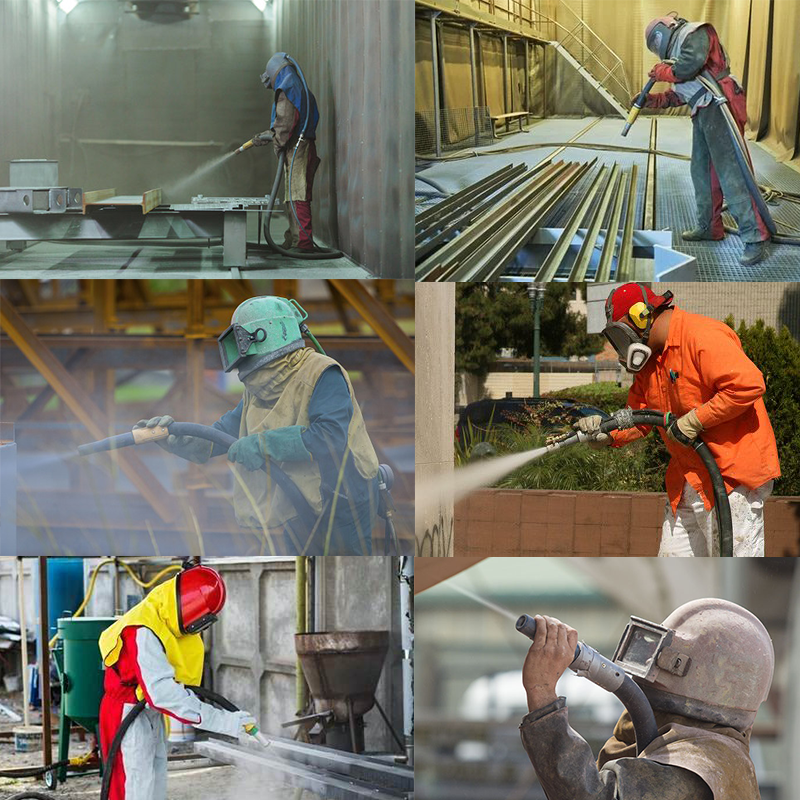
How to choose the right sandblast hose for my sandblast machine
The nozzle orifice not only helps determine the necessary compressor size, but also the proper air hose. It is always recommended to use an air hose with an inside diameter of 1-1/2 inches or larger and unrestrictive fittings. The air hose should be at least 3 times the diameter of the nozzle orifice. The reason a large air hose is recommended is to reduce pressure caused by friction. Your air pressure (PSI) will actually drop due to the friction created inside a more restrictive, smaller inside diameter air hose. In return, for every PSI of pressure lost, production is reduced by 1-1.5%.
To maintain proper pressure and minimize pressure loss in sandblast hoses, you should also keep the compressor as close to the pot as possible, minimize the length of air hose required, and thus reduce the need for bends and curves in the line.
How much air pressure is needed for sandblasting?
Air pressure in sandblasting (sandblasting is an outdated term in the industry) is a key factor in determining the effectiveness and quality of the sandblasting process. It refers to the pressure of the compressed air used to push the abrasive material against the surface being treated.
The required air pressure depends on the abrasive you are sandblasting, the type of work, and the equipment used. Generally speaking, the optimal operating pressure for a sandblast pot is about 90 PSI (pounds per square inch), which ensures efficient and effective sandblasting. The compressor must provide enough airflow to maintain at least 50 PSI of air volume in the blast pot to keep it pressurized. For light-duty sandblasting, a compressor with a PSI rating of 90 or higher is required, while medium and heavy-duty sandblasting requires at least 100 PSI. Industrial grade compressors may require a PSI rating of 120 or higher.
What should you pay attention to when sandblasting
Abrasive blasting (formerly known as sandblasting) also is called grit blasting, bead blasting, media blasting, soda blasting, dry blasting, sponge blasting, shot blasting, and shot peening. However, sand should never be used when abrasive blasting because breathing abrasive containing crystalline (free) silica can lead to serious or fatal lung disease.
choose Sinopulse as your sandblast hose manufacturer
Sinopulse, as china top blast hose manufacturer, carries blast hoses for maximum air pressure in 2-ply and 4-ply. Our abrasive blasting hose can meet the needs of a wide array of applications. Our blast hoses come in several different lengths and several different diameters, so it can accommodate whatever task you have in mind.
Whether you are looking for the flexibility of a Supa hose, the high durability of a 4-ply hose, or the versatility of a 2-braid hose, Sinopulse can provide you with the highest quality sandblasting hose for all your sandblasting needs.
As a professional sandblast hose manufacturer, Our blast hoses come in several different lengths and several different diameters, so it can accommodate whatever task you have in mind. If you have any questions about any other components of the correct sandblast hose, please call or email our experts today.

